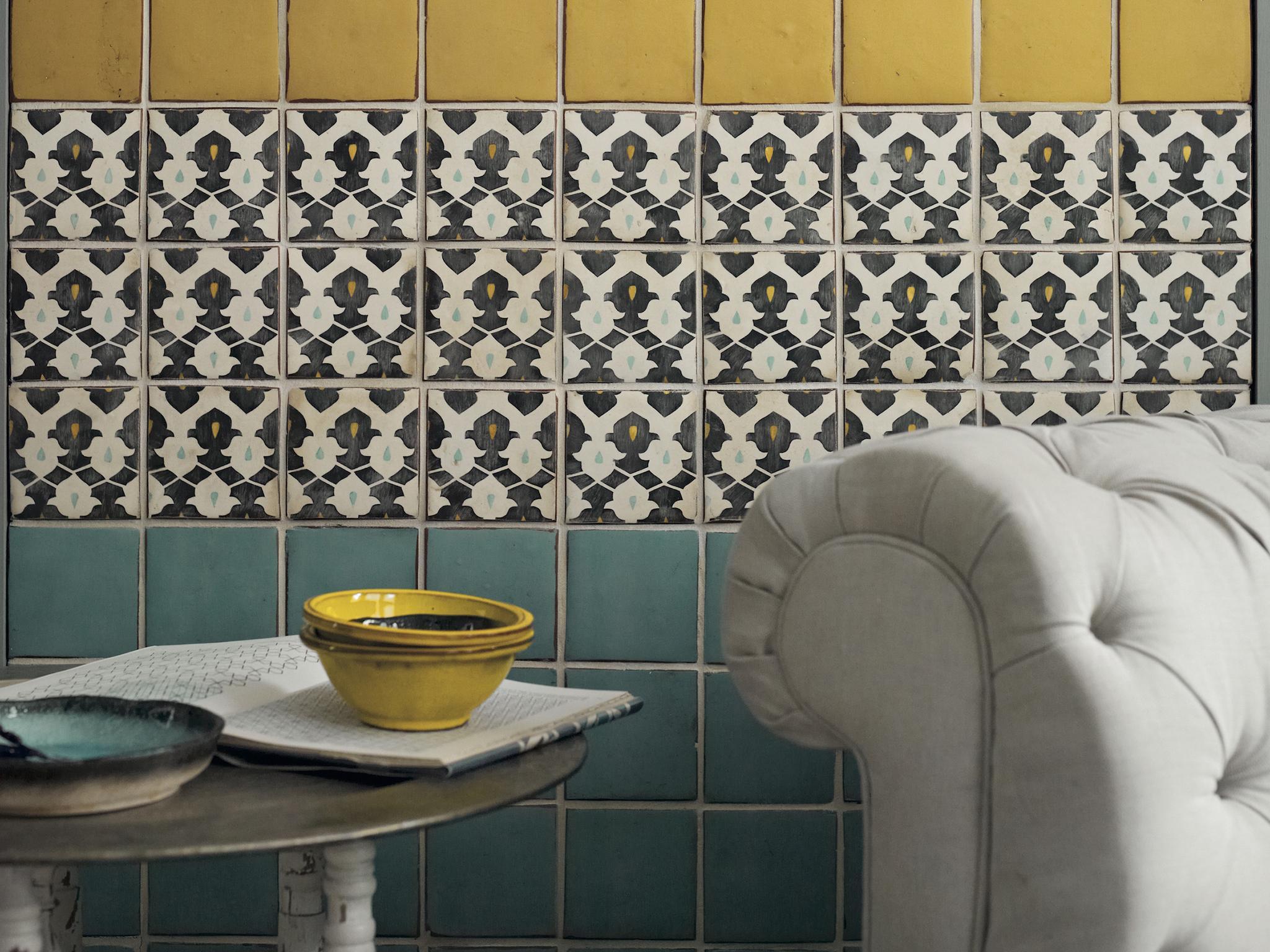Design trend: Moorish inspired hand-painted tiles
Hand-painted tiles should not just protect kitchen work-tops. Instead geometric shapes should be lavished on feature walls or adorn lounge floors

Forget dado-rail level tiles of farmyard scenes in the kitchen, or an attempt at perfectly randomising tiles of diving dolphins throughout the bathroom or framing the fireplace. Hand painted geometric tiles are beautifully designed and need to do more than just protect worktops – given their intricate beauty and craftsmanship – they’re able to become features in themselves.
“Patterns are huge at the moment. People want something to look old and authentic,” says Colin Roby-Welford, Creative Director at Fired Earth.
“Most of our tiles are used for the floor, which is their traditional use, but we are seeing more people using them as feature walls; some of these products are expensive so people use them sparingly and want to create a bit of drama.
The point is to make your house look original, where it could otherwise be quite drab and the beauty is that every one of them is different.
“Most of our designs are based upon classics; our geometric designs are not modern. We use a matt finish for most of the patterned tiles. The tiles are aged with a wash that gives them a well-loved look and then glazed several times.”
“One of the best uses for tiles is a ‘mat’, such as in a lounge under a coffee table. People also like to use them in occasional rooms like the downstairs loo, and it becomes talking point for one thing,” he said.
The majority of geometric designs are quite heavily influenced by 18th century Moorish designs that swept across the Mediterranean and northern Africa with deep hues of blues, greens and yellows.
While more modern versions have lightened colours, introduced whiter, simplified patterns and even made colours redundant all together, using monochrome colours keeping the geometric patterns.
Evolving from basic pottery in the BC era, tiles were once – in Victorian times – associated with the richness of palaces, churches and the stately homes of the aristocracy who could afford them and opulently decorated their floors with them and now people are desperate to keep the tiled flooring of their Victorian terrace in a bid to be on trend.
When floor tiles became too heavy to lift, they migrated to the walls and by the 19th century the ease of wallpaper undermined tiling, until an interest in craftsmanship returned.
Douglas Watson, a ceramics tile manufacturer uses two types of techniques to decorate the tiles. “The traditional technique of glazing which has been around for hundreds of years and another technique called Fresco which is a slip painted onto the biscuit of the tile and then polished off and fired, which results in a matt surface and is more contemporary and be used on floor tiles too.
“Depending on the complicity of the pattern, some tiles can take up to an hour to paint, Watson said. “While in comparison, simpler tiles will only take minutes.”
“Ceramic colours are painted directly on to the glaze of the tiles, which are then fired to 1000C or 12000C, depending on the tile, which makes them very durable.”
Douglas took his inspiration for the palm court tile from a lace pattern and transformed it into a design with only two colours. Other geometrics include the Persian Knot, inspired by Moorish design and the very intricately designed Algarve tile.
Geometric floor tiled patterns are a nod to Victorian styled floorings, but if you’re on they shyer end of colour and design, kitchen cooker backsplashes, behind sink and patterns in the shower are the perfect area for an injection of colour from tiles. More subtle shapes and tones, such as Malborough’s Pendragon range fit this bill.
While darkened hall ways can be lightened with monochrome tiles. The Trellis Wall range from Fire and Earth uses monochrome 3D effects, making them bold with a chic feel that would not have looked too out of place in the Art Deco era.
More detailed black and white tiles are most suited to flooring, with jewel like shapes surrounded by diamond borders, like Fire ClayTile’s Murietta design, which will lift neutral coloured walls for a subtle charm to a hallway or bathroom.
Tiles with more colours, including oranges that are more in line with the original Moorish designs can be used with other similar tiles to create a powerful wall patterned and feature walls to lighten a hall way or bring a small bathroom to life, or matched with non-patterned tiles of the same colours for feature walls, like Fired Earth’s Marrakech Targa’s tile.
Subscribe to Independent Premium to bookmark this article
Want to bookmark your favourite articles and stories to read or reference later? Start your Independent Premium subscription today.

Join our commenting forum
Join thought-provoking conversations, follow other Independent readers and see their replies